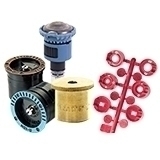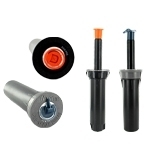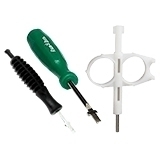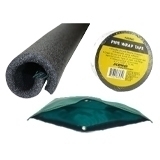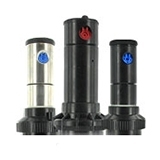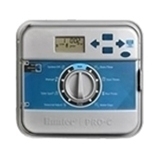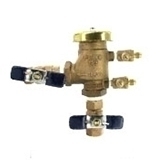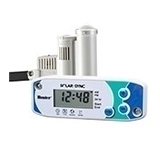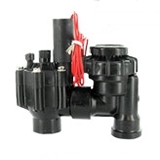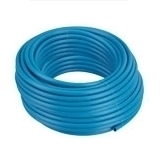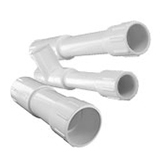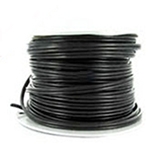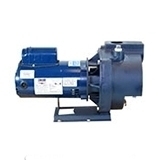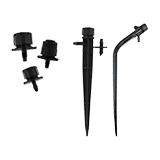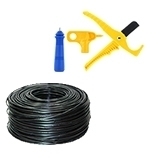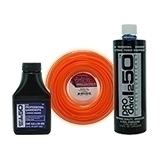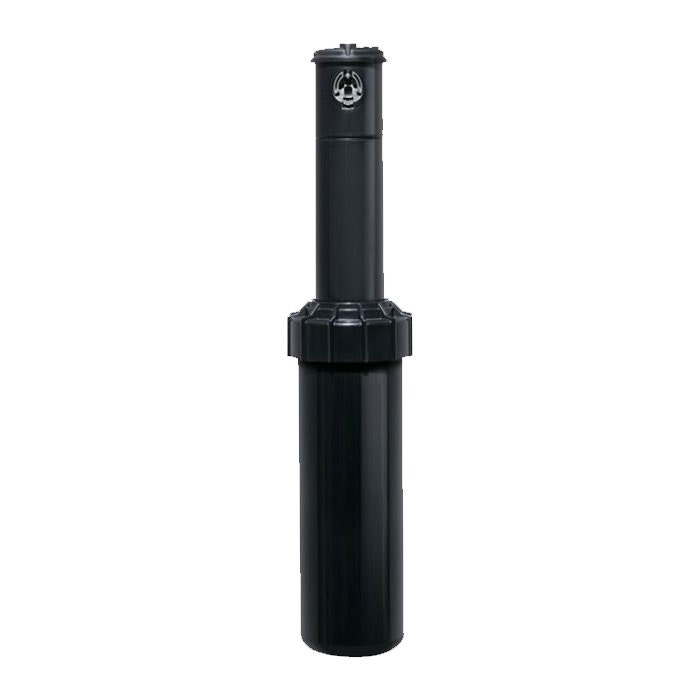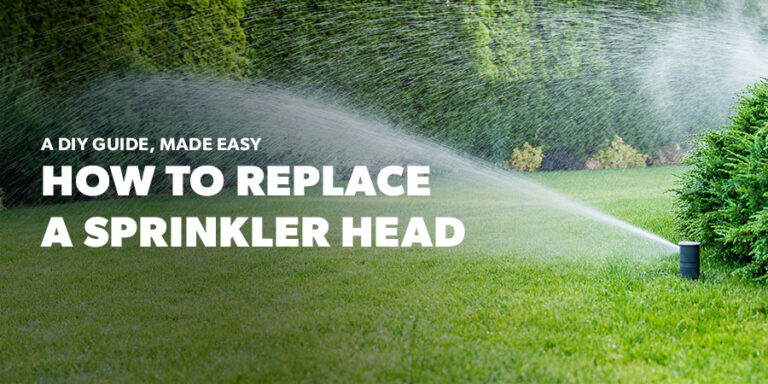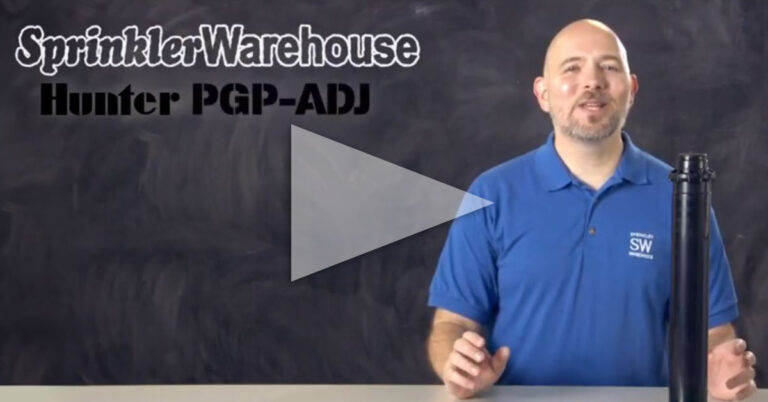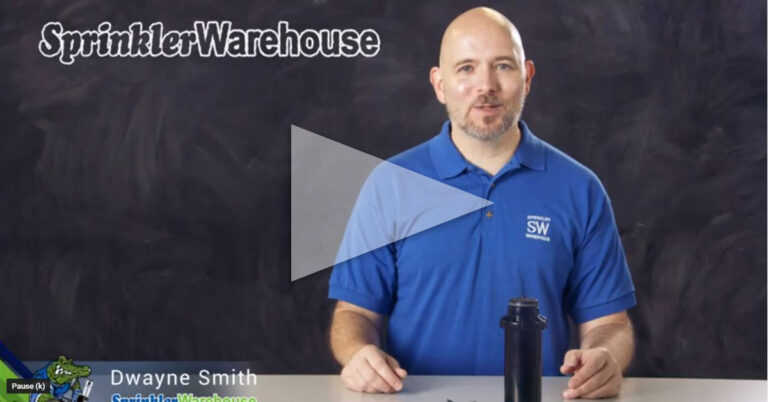When it comes to an irrigation system, there are tons of parts all working together. This video is going to give you a very brief overview of the devices, products, and concepts that make up your sprinkler system. I’m Dwayne Smith, your Sprinkler Warehouse product specialist. Let’s get started.
Water Pressure
Water pressure is force applied to water, which pushes it through piping. Water pressure is measured in PSI (pounds per square inch). Too little pressure and your sprinklers won’t operate correctly. You’d have to reduce the number of sprinklers operating at once or use different nozzles to work around that issue. Too much and your sprinklers will mist, which means you’ll be wasting water. There are pressure regulators which can be installed in your system to deal with the too much pressure issue. There are pressure regulating valves and pressure regulating sprinkler heads as well.
Flow Rate
Flow rate is how much water travels through your pipes at any one time. It’s measured in GPM that is Gallons Per Minute. Your flow rate indicates how much water is available to your sprinkler system.
Pipe Diameter
Most residential sprinkler pipes are going to be 1 inch or three-quarter inches. The diameter of your pipe limits your flow rate.
Piping
Depending on where you live, your irrigation pipes may be made of PVC or Polyethylene AKA poly pipe. Fittings for PVC pipe are also made out of PVC and are attached using PVC primer and glue. Poly pipe uses a variety of fittings, most frequently barb-type fittings.
Sprinklers
Sprinklers are the objects that spray water onto the landscape. They come in many different styles: rotors, impacts, sprays, rotary nozzles, flood bubblers are the most common types. Notice that sprays and rotary nozzles use the same body: It’s the nozzles that are different. Rotors and sprays are the most frequent. Most landscapes will have rotors watering the lawn and sprays in the flowerbeds. The types of sprinklers chosen will depend on the needs of the landscape, the water pressure, and flow available.
Nozzles
Sprinklers, whether they are rotors or spray heads, limit the amount of water they throw by the use of nozzles. Nozzles come with differing gallons per minute ratings. That gallon per minute rating is not absolute. It varies by the water pressure going into the sprinkler head. When an irrigation system is designed, flow rate, water pressure, pipe diameter, the number and type of sprinkler heads, and which nozzles are installed, must be taken into account.
Zones
Not all of your landscape can be watered simultaneously due to limits of water pressure and water flow. Zones divide your landscape into sections that can accommodate the amount of water pressure and flow that is available to your system. Zones are also configured for areas that may have differing water needs, such as flower beds, vegetable gardens, and lawns.
Valves
Valves start and stop the flow of water into a zone. Each zone has one valve that controls it. Valves are usually either inline valves or anti siphon. Inline valves are located below ground in a valve box and require a separate backflow prevention device. Anti-siphon valves include a built-in backflow prevention device and because of this they have to be installed above ground.
Valve Boxes
Valve boxes are used to house valves underground and allow easy access for maintenance. They come in various sizes. Larger boxes can hold multiple valves. They are used for mainly for inline valves, but can be used for other components such as flow sensors, water meters, and cut off valves.
Manifolds
Valves are often grouped together in a manifold. By grouping valves it increases the ease of maintenance and often reduces the cost of piping.
Backflow Preventers
Backflow preventers, often just called “backflows”, are devices that are used to prevent back siphonage or backpressure from contaminating drinking water. Most water districts require that some type of backflow prevention device be installed in an irrigation system. Laws and regulations in your area may require a specific type of backflow and specify where it can be installed. As I mentioned earlier, anti-siphon valves come with a backflow device built into the valve. The most common type of backflow device in residential areas is a Pressure Vacuum breaker, which must be installed inline between the water main and the irrigation system. It must be at least 12” higher than the highest sprinkler head in your system. Other types of backflows also include reduced pressure zone assemblies and double-check valves. Depending on where you are located, those might be more common.
Controller
The controller – also called the clock or timer – is the brain of your system. It sends a signal to the valves to tell them when to turn on and off. A controller keeps a regular schedule for your irrigation system. It allows you to choose the frequency, time of day, and length of each watering cycle and allows you to set different watering times for different zones to meet the particular needs of your landscape.
Smart controllers are a step up from the basic model of controllers. Smart controllers can utilize blue tooth or wifi to interact with your smart devices. With smart controllers, you can program your controller from your computer or smart device and you can receive alerts. Some smart controllers can interact with local weather stations and adjust watering accordingly, saving you money and sparing your landscape from being overwatered.
Sensors
Sensors are another way to save money and protect your landscape from over or under-watering. Rain or rain and freeze sensors put watering on hold when the weather is inappropriate for watering. Moisture sensors determine the level of moisture in the soil and wind sensors prevent watering when it’s windy enough to blow a substantial amount of your water onto the neighbors’ lawn.
Flow sensors are special types of sensors that are installed into a section of irrigation pipe and monitor your water usage. Flow sensors can alert you if there is a leak or broken valve which would save you a lot of money and can even save your landscaping. If you want a flow sensor, you’ll need an appropriate smart controller that can communicate with a flow sensor. Not all controllers work with flow sensors and some only work with specific flow sensors.
Wire
Wire is run underground from the controller to the valves. Each zone has a hot wire that goes directly to a valve and then a common wire goes from one valve to the next in a daisy chain and back to the controller. Irrigation wire is either 16 gauge or 18 gauge for residential systems. When running 16 gauge wire like this, there should be at least one colored wire which will be the hot wire and a white wire which will be common.
There’s also multi-conductor wire like this. This is 18 gauge. Multiple hot wires are bundled together along with one white wire. It works well if your valves are all together in a manifold. Multi-conductor wire can save you money in the right situation.
Drip systems
Drip is different than the typical sprinkler system, although a drip system can be tied into your regular sprinkler system. In a drip system, water is delivered directly to plant roots through the use of emitters. There is a drip hose that has emitters embedded in regular intervals. Or a series of tubes can be run to position emitters directly near plants so that each plant gets precisely the amount of water it needs. Drip systems usually use a much lower water pressure than typical sprinkler systems. If a drip system is incorporated into a typical sprinkler system, the drip system will be a separate zone; it has a separate valve and will need a pressure regulator to reduce the water pressure going into the system. Drip systems can be underground, i.e. subsurface, or above ground.
That should get you a jump start into your overall sprinkler knowledge. We have a ton of videos covering each of these concepts and products in greater detail. Go check them out.


